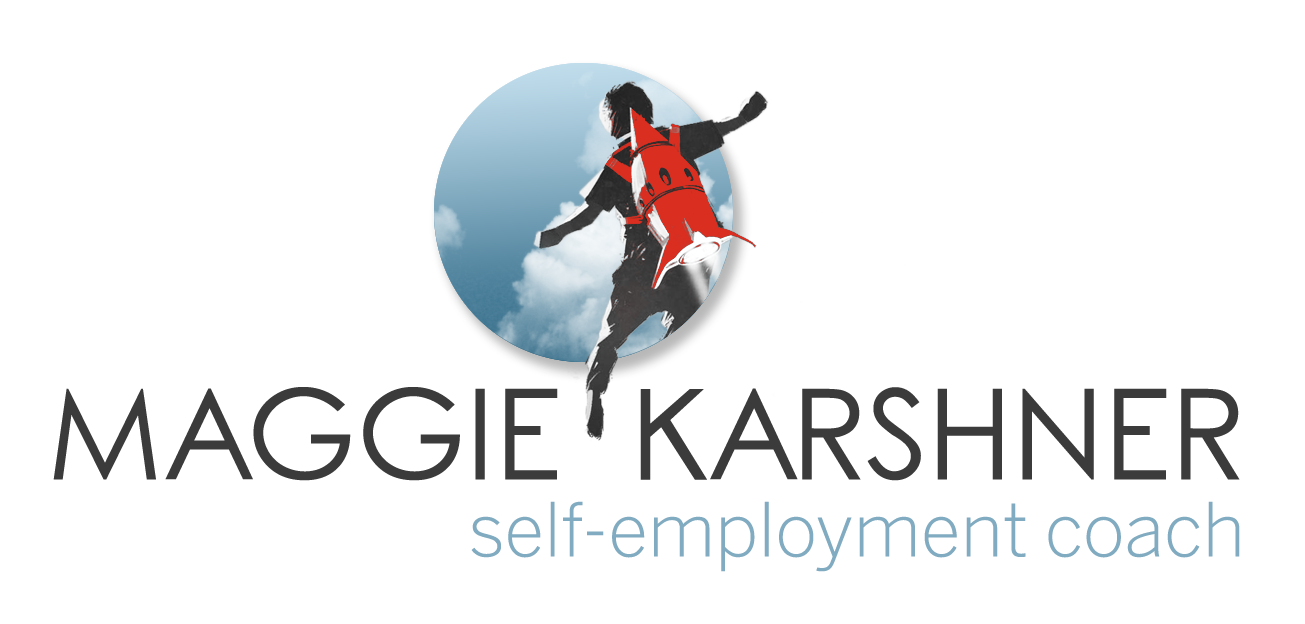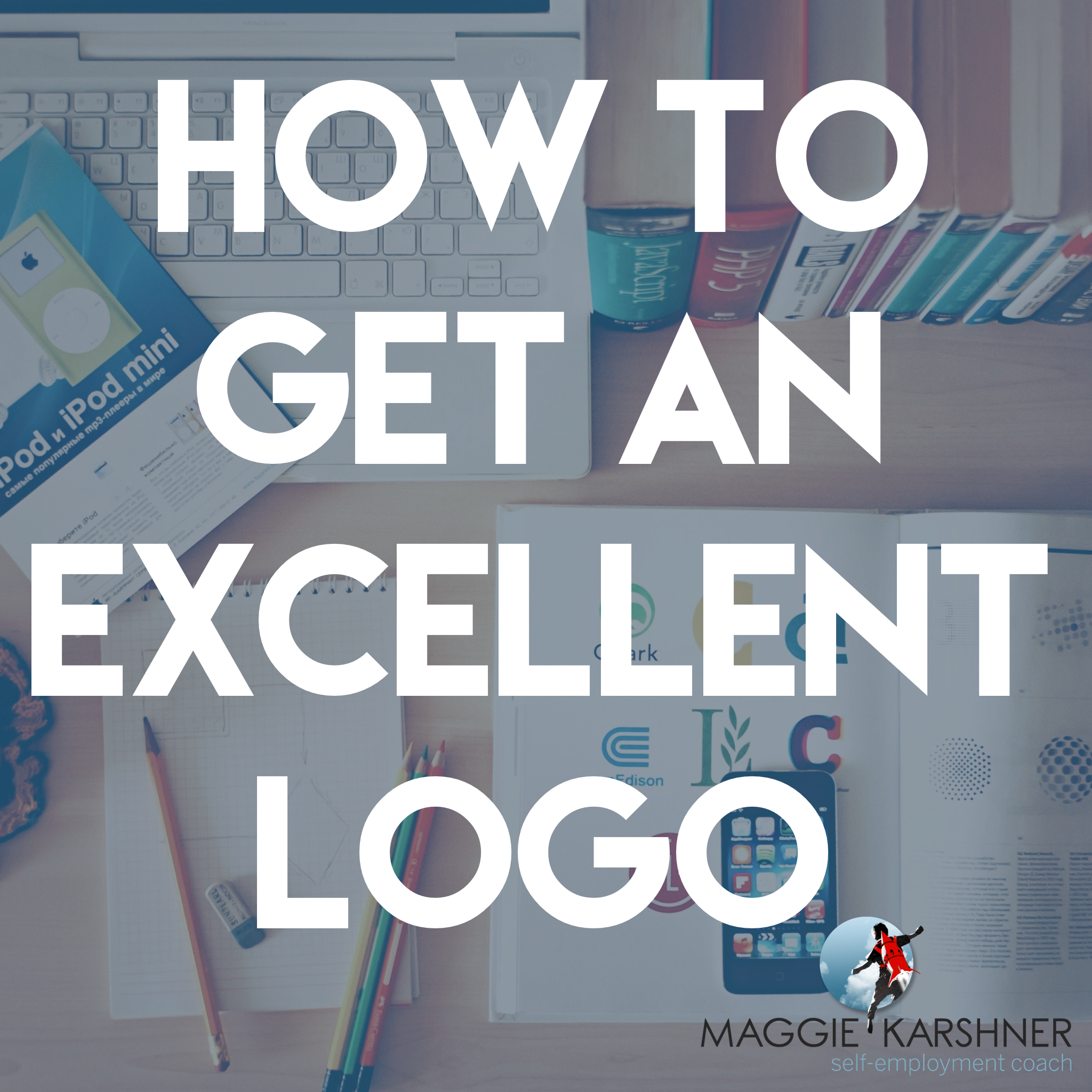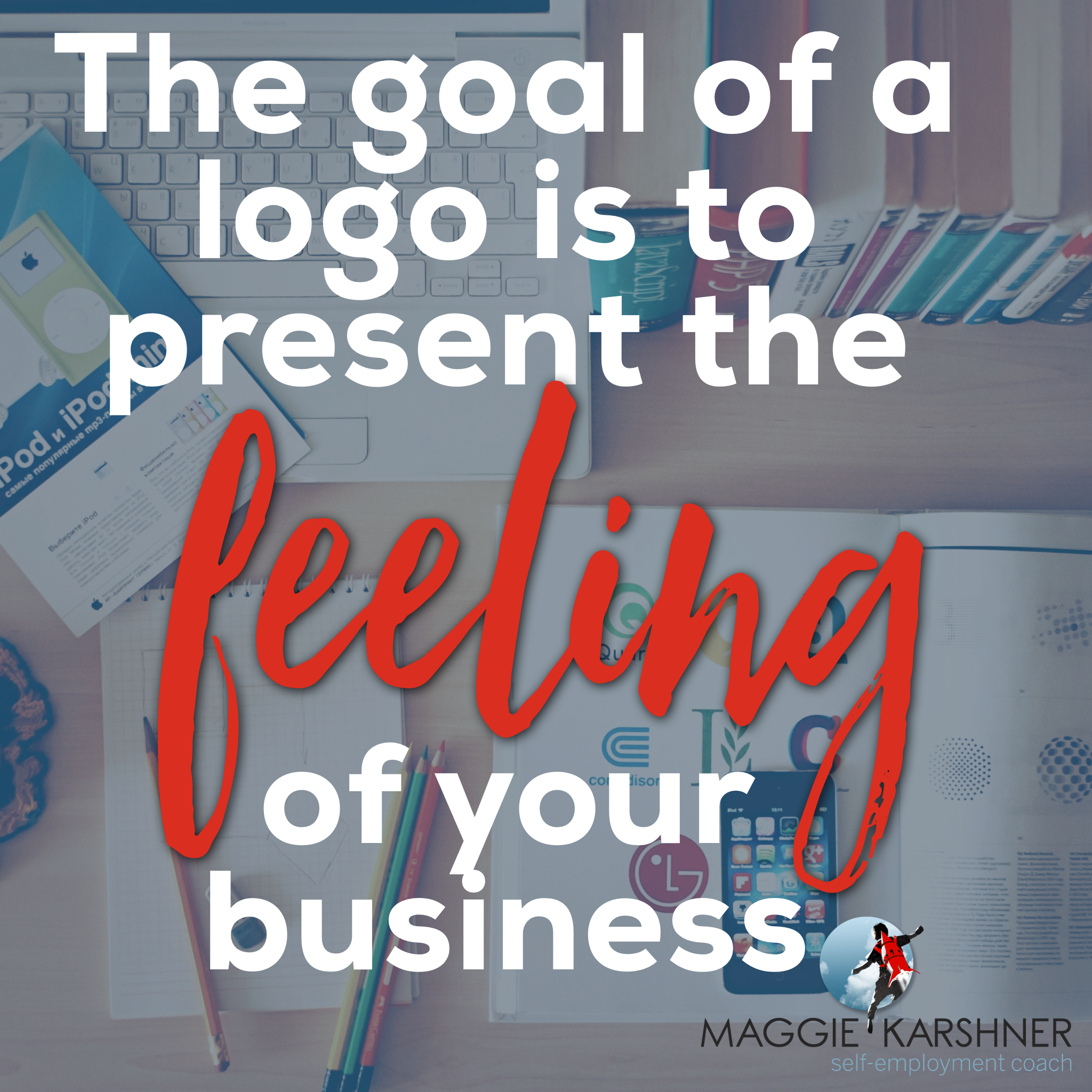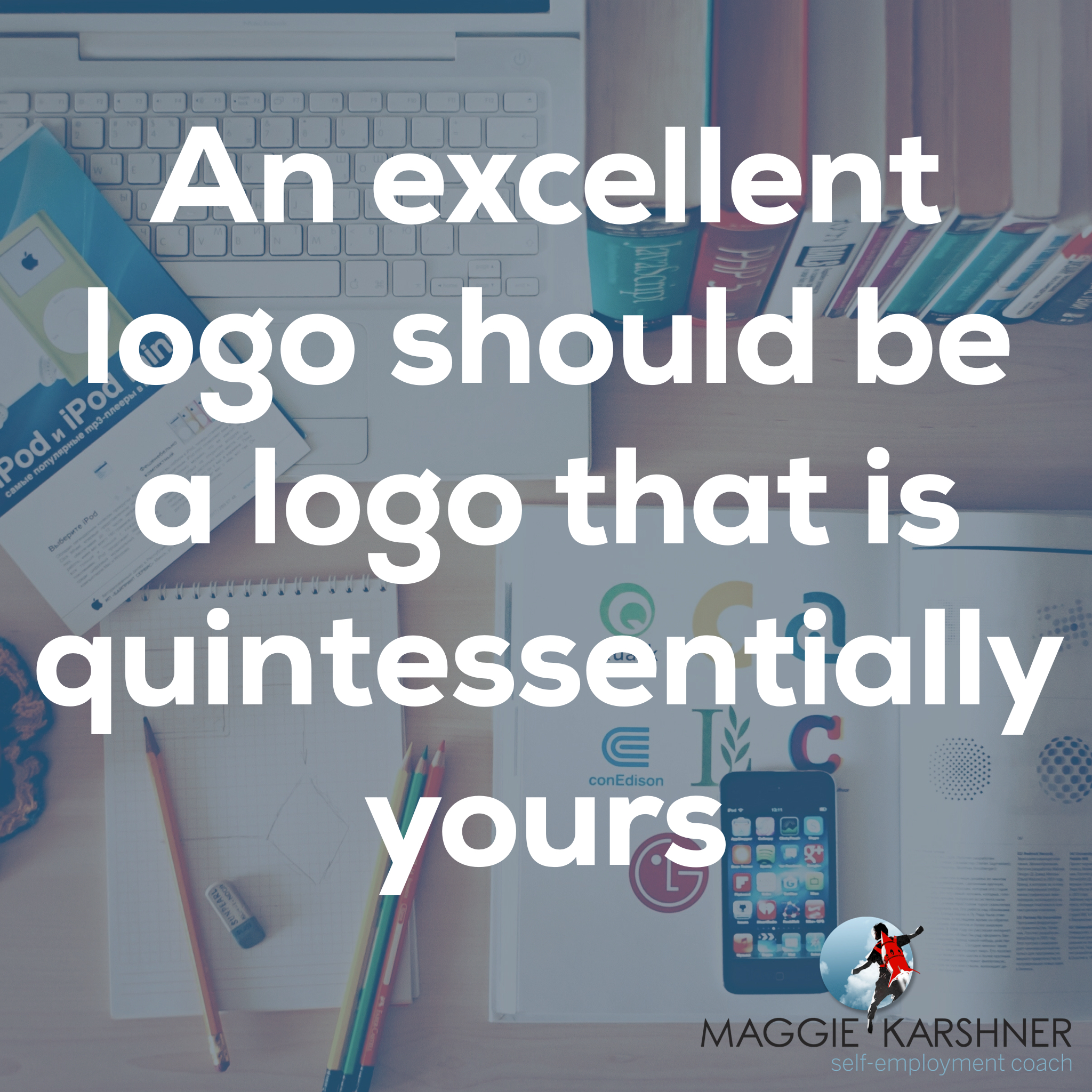How to Get an Excellent Logo
/Most people who are launching their self-employed business put "get a logo" on their to do list. It seems common knowledge that a business needs a brand and that is immediately equated to a logo. While a logo is not the whole of a brand, it is one key graphical piece and it's a piece that most people can't make happen by themselves. (I don't care how good your skills are at Paint, that's not a good way to get a logo!) Getting a logo for your business is going to require working with a graphic designer. So, I sat down with Jesse Gibbs of Esperluette Creative (and designer of my new logo!) to identify what small business owners need to know about working with a designer to get your logo.
Do you need a logo?
You’ve probably already assumed the answer to this question is “yes!” But this question came up when chatting with Ms. Gibbs and I think it really is an important thing to take a minute to examine rather than assuming that you do. And even more importantly, maybe it’s just not the high priority you think it is.
What is a logo? Why is a logo?
To determine if you need a logo, the first step is to understand what a logo is. The goal of a logo is to present the feeling of your business without any other context, and in a way that is identifiable across many contexts. In other words, if people learn about your business from an advertisement in a magazine, then the logo is a key piece that’s conveying the feeling of your brand. However, if people learn about your business from you, or from someone who knows you, the logo isn't presenting the brand, the person talking about your business is doing that work.
As an identifier across multiple contexts, a logo serves to confirm that, yes, this is the same ABC Company that I saw in that other ad. If your business is presented to people through word of mouth then the name of the business is probably more significant than the logo. In the case of word of mouth, a visual tie-in is either superfluous or can be achieved by simple means such as using the same font on your business cards and website.
So here’s the thing to consider: if your business' marketing is going to be predominantly word of mouth based, then a logo is actually a very low priority. (Though nicely designed business cards are still a good idea.) That doesn't mean that it's pointless to get a logo; there still will be people who learn of your business in unusual ways or who are more visual and having that graphic component would be helpful to them. But that's likely going to be a minority, and when you're just getting started a big project and/or expense like a logo can take up a lot of resources that would be better used in other ways.
Also, when you’re just getting started, it can be super difficult to be clear on your brand, and you might want to pivot within the first three years of your business. (And you really don’t want to change logos more often than every 3 years according to Ms. Gibbs.) So think about putting the logo project on the back burner for a while.
“However,” Ms. Gibbs cautions, “if you’re going to be putting your business identity all over the sides of vans and on billboards, then you probably need to pay for a proper logo from the get go.” If your business is going to be learned about from advertising or social media promotions, then a logo would be a more worthwhile investment.
How much should I pay for a logo?
Now that I’ve got you questioning if you even need this logo, let’s consider cost. Logo design can be everything from $20 (on sites like fiverr.com and upwork.com) to $500 (through boutique graphic designers) to much much more, or even free (if you have a graphic designer in the family or get in with your local design school.) With such a wide variety of prices, there’s also a wide variety in results. But paying more doesn’t guarantee a better logo.
What makes an excellent logo?
To know how much you’re willing to pay, we need to understand what makes an “excellent” logo, what you're paying for, and where the “excellent” results actually come from.
An excellent logo should be a logo that is quintessentially yours, and that doesn’t mean that it simply doesn’t exist already. It should represent your brand as unique and special compared to everyone else doing something similar to you. This means the designer needs to help you turn your thoughts into pictures. While an infinitely talented and psychic designer might be able to read your mind and make this happen… that’s really not how this works. The designer has a design skill set that helps them to coax the right information out of you, so they can design something that reflects your brand. This coaxing process is also known as the design process and this is what leads to a logo that most perfectly represents your brand.
If it’s all about the design process, what does the designer have to do with it? Essentially you’re paying a person to design a little piece of art for you. Their past design experience and training as well as their innate creative talent is all coming to play in this one little logo of yours. Ms. Gibbs conveys this by telling a story about Picasso: “He was in a bar and someone asked him for a sketch. He took a napkin and drew a 10 second sketch. Before handing it to the fan he said, ‘that’ll be $1,000.’ ‘$1,000?!’ the fan said, ‘but that only took you 10 seconds!’ and Picasso said, ‘no, that’s the culmination of a lifetime of training.’” So keep in mind that you’re design is more than the designer's time working on your logo in specific.
Selecting a Graphic Designer
You know you can’t afford Picasso, and you want a good design process, but how do you find that? There are a few factors that make the design process go more smoothly: experience working clients through this process, familiarity with your industry, and a pay rate that allows the designer the space for a patient design process.
With a top dollar designer you're not only paying for an experienced hand to guide you through the design process but also for a nuanced experience with logos like your. It’s important for your designer to know what aspects of your logo will indicate you're part of the industry and which pieces will help you stand apart from the same-old-same-old in your industry. A well paid designer is also going to have the patience for the back and forth necessary for a productive design process.
A budget designer is going to cut corners, not in the final design but in the process. They’re probably going to limit how much back and forth happens, or have less experience guiding you through the design process. They probably won’t research your industry to ensure you stand apart from the crowd. This doesn’t mean you can’t get a good logo out of the process. In fact, Ms. Gibbs encourages business owners to set a budget for their logo that is proportionate to the business’ revenue, which means a budget option is the way to go for self-employed business or businesses that are just starting out!
If you really want to aim towards affordability, you can always try hitting up your local design school to see if they have any students who want to get some real world experience under their belt. But keep in mind that a student (and that friend who is a graphic designer on the side) is likely to have the least real world experience working with clients.
Successfully Working with a Graphic Designer
Graphic Designers have been trained in the principles of design. They know how to make things that look good and they typically have a vocabulary for how to describe visual components. These things are probably not true for you. Professional graphic designers also have the experience of working with non-designers like you to get to a logo they like. You can expect to go through a creative process with your designer; it is not a simple transaction of "I give you money you give me design." The graphic designer's training and experience combined with the process of developing the design is what you're paying them for, so embrace it! Become familiar with the design process and move through the process with your designer.
The Creative Design Process
Graphic designers are not mind readers and they are not machines. You cannot expect them to have a conversation with you and then make something perfect. Graphic Designers expect a process of revision, and there is a typical process you can expect to take with your graphic designer.
Beginning the Design Process
First, a graphic designer will likely want to get a sense of what you're looking for graphically. Part of this will be a conversation but it can also take other forms. Ms. Gibbs has a practice of asking clients to find 10 logos they like from industries *other* than their own. This gives her a sense of what design elements a client likes without getting stuck in the things everyone seems to be doing in a given industry. She also says that anything visual can help inform the designer. With the advent of Pinterest, she loves when clients share Pinterest boards of anything they find aesthetically pleasing, even if it seems to have nothing in common with a logo. She’s drawn inspiration from interiors, to wardrobes, to book covers!
Revision in the Design Process
After some initial conversation a designer will take some time to find that creative muse and then get back to you with an assortment of possible logos for your business. Sometimes business owners are inclined to "pick one" at this stage, but that's rarely the graphic designer's intent. If one really excites you, then great, but that's not typically what happens.
The designer is probably expecting feedback. And remember, they have the design training and the experience to decipher your feedback into design. Ms. Gibbs emphasizes that negative and positive feedback is vital. "Don't just tell me what you don't like about my design," she says, "tell me the things you *do* like so I know what aspects to keep!"
Your graphic designer will then take your feedback and present you with new possibilities. This process of feedback and revised design ideas can be repeated as much as necessary, but hopefully it starts to move towards feedback like "I like this part of design A, but that part of design B" where you're narrowing in on a single design.
The Final Design
Once you've settled on a design, the process is not quite done yet. Your graphic designer will purchase the rights to any design elements on your behalf (fonts, vector files, or stock photography used in your design) and get you a few versions of your logo. By "versions" I mean that the logo essentially looks the same but is in different file formats (.png vs .jpeg) or different file sizes (small for web use, large for print use, or extra large if you plan to use on large banners or billboards) or with inverted colors so that it will look good if used on a white background vs. a black background. Save these files in a safe place where you can find them and use them for all your future logo needs! And last but not least, you'll get an invoice from the designer; don't forget to pay them for the beautiful work of art they've created for you!
Successful Logo Design
Hopefully this article has helped you realistically examine your need for a logo, what you’re getting with your logo and all that it takes to get a logo designed. It can be a lengthy process; since design is inherently creative, it can take time for the right creative juices to get flowing. Planning a realistic time frame and budget can relieve many pressures from the process. Being realistic on if your business even needs a logo right now will also help you prioritize your business efforts towards growth and success.






